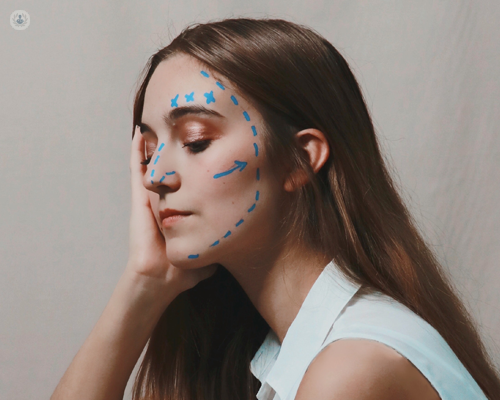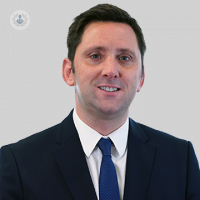Getting the right facelift for you
Written by:There are many considerations when it comes to having a facelift. Age, facial volume and specific supplementary procedures, like eyelid surgery, come to mind. It may be overwhelming to think about all of these things, on top of the question: ‘What’s right for me?’.
Here to assist is highly-experienced consultant plastic, reconstructive and cosmetic surgeon Mr Paul Tulley. This Harley Street surgeon speaks to Top Doctors about what works for different age groups, the skill of the surgeon involved and how long results can last, among other important points.

Who is a suitable candidate for a facelift?
Younger patients (those in their forties, occasionally later thirties, and a few in their early fifties), are best suited to a short scar or mini facelift. They may have noticed their mid-face/cheeks starting to drop with:
- A loss of cheek volume, contour and projection;
- The appearance of tear troughs or shadowing under the lower lids;
- Naso-labial folds starting to form;
- Whilst also gaining volume in the lower face;
- The formation of jowls and loss of jawline definition.
However, these patients generally have good necks so don’t require a necklift, although some may benefit from liposuction to the neck and/or jowls with a short scar facelift.
Older patients (usually from their fifties upwards) usually benefit from a full facelift (face-neck lift) as their necks have started to slacken and descend also, losing neck definition, plus they tend to have further loss of jawline and lower face definition and loss of cheek contours.
They will also frequently combine a full face-neck lift with ancillary procedures, for example: Blepharoplasty (eyelid surgery), facial fat grafting and a browlift.
How can patients choose the right type of facelift for them?
As discussed above, this, to a great extent, is determined by their age and therefore the degree of facial rejuvenation is required.
It usually depends if the neck is in a good position or has dropped. In which case, a full face-neck lift is needed.
A further factor is the volume of the facial tissues. Most facelift procedures involve lifting and resuspending the deeper SMAS tissue layer. Where there is loss of facial volume, a SMAS plication-type procedure is more likely to be recommended to retain facial volume. Where volume or weight has been gained in the face, a SMASectomy-type procedure is more likely to be suitable in order to lift and slim the face. Where a more extensive lift is required, a deeper plane procedure may be more suited.
It’s also more common for older patients to combine ancillary procedures with the facelift, such as a blepharoplasty, browlift and fat transfer. This is because these areas of the face are affected also, often with loss of facial volume.
Is there a ‘perfect age’ to get a facelift?
This depends on a patient’s genetics, lifestyle and profession alongside their preference and views regarding surgery. Different patients will have varying views or requirements as to whether to start facial rejuvenation surgery at a younger, middle or older age. Some may prefer to maintain optimal facial aesthetics from a young age and will start with a simpler procedure once Botox™ and fillers stop being able to provide a full correction; usually in their late thirties or early forties. Others may prefer to wait until they are older; in their forties, fifties or even later, to start surgery.
Starting facial rejuvenation surgery younger has the advantage that less is required to produce a full correction. The tissues have a stronger tone to maintain the results longer and the patient is younger and fitter for surgery. Following initial surgery, the face tends to age slower as the scar and fibrous tissue laid down in the face subsequently strengthens the support to the superficial facial tissues.
Will the results of a facelift procedure look natural?
Yes, if a good, well-executed technique is used, with a lift of the deeper SMAS layer, then a natural result will be produced. However, this is dependent on the skill and experience of the surgeon.
How long do the results of the procedure last?
Results should last 10 to 15 years and also depend on the patient’s genetics and lifestyle. For example, if they smoke, sun-bathe excessively, have a stressful job, get adequate sleep and have a good diet.
Avoiding smoking, excessive sun exposure as well as stress and sleep loss. Combined with good genetics, diet and lifestyle will ensure the results last the maximum length of time.
Visit Mr Tulley’s Top Doctors profile to arrange a consultation about getting the right facelift for you, here.


